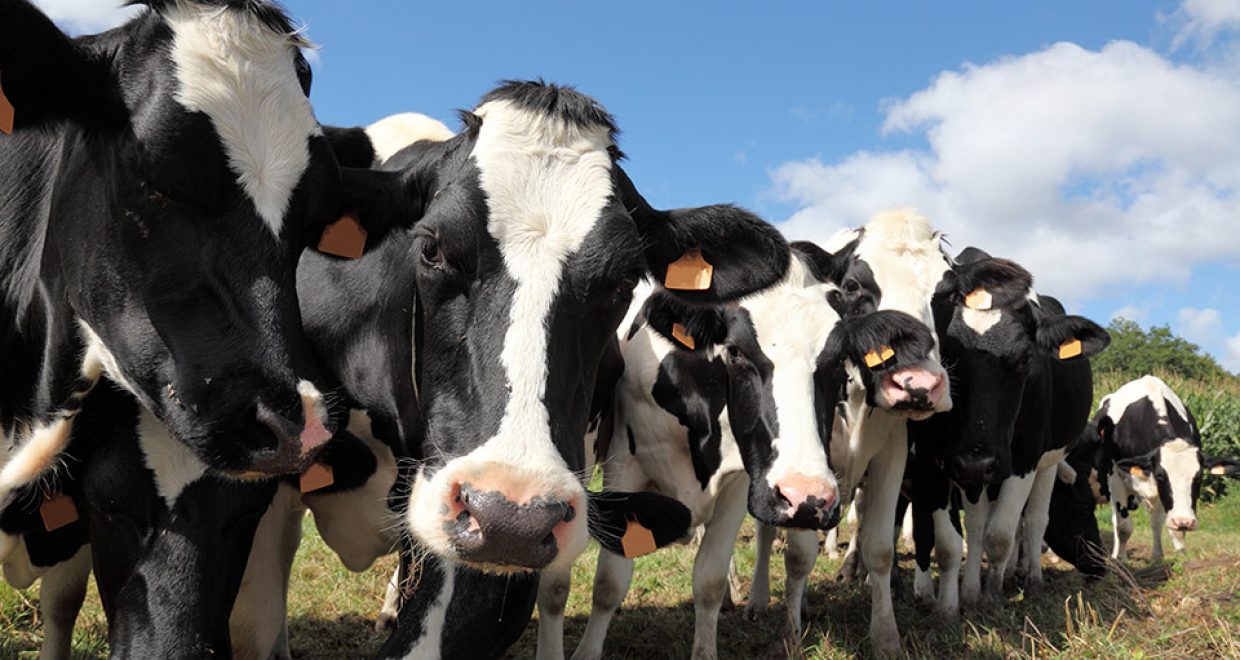Finding fresh ways of tackling Negative Energy Balance in dairy cattle
The animal article of the month for June is ‘Integrated regulatory network reveals novel candidate regulators in the development of negative energy balance in cattle‘
The biological cycle of milk production for dairy cows is a crucial factor for dairy farmers. After cows have given birth, the new mothers sometimes face the phenomenon of Negative Energy Balance – which is a metabolic state that occurs when the energy demands for milk production exceed the cow’s energy intake. This can have a detrimental effect on a cow’s liver and can also lead to metabolic disorders, reduced fertility and lower rates of embryo survival – not to mention a reduction in milk production, which can have serious implications for dairy farmers.
The liver, as the central metabolic organ and one of the sources of energy supply – and as a key organ in the physiological adaptation to Negative Energy Balance – is key to tackling this issue. So the authors from the University of Tehran analysed the sequencing of the Ribonucleic acid (RNA) structures – the DNA for plants and animals. They focused their attention specifically on messenger RNAs (mRNA), which are used by cellular organisms to convey genetic information, and microRNAs (miRNAs), a small non-coding RNA molecule that plays a key role in RNA silencing and post-transcriptional regulation of gene expression.
The authors analysed mRNA and miRNA sequencing datasets from seven liver tissue samples taken from three cows affected by Severe Negative Energy Balance and four cows affected by Mild Negative Energy Balance. Their method integrated two independent types of information: module inference network transcription factor (transcription factors are proteins involved in the process of converting or transcribing DNA to RNA), miRNA and mRNA expression profiles and computational target predictions.
 In total, 176 modules (co-expressed genes) were identified, as 64 miRNAs (for example, miR-132 involved in immune and stress responses) and 63 transcription factors (including NF-κB involved in fat cell differentiation) were assigned to these modules. Further analysis led to identification of 13 transcription-factor module and 19 miRNA-module interactions with potential functions associated with biological processes in the development of Negative Energy Balance (see Figure).
In total, 176 modules (co-expressed genes) were identified, as 64 miRNAs (for example, miR-132 involved in immune and stress responses) and 63 transcription factors (including NF-κB involved in fat cell differentiation) were assigned to these modules. Further analysis led to identification of 13 transcription-factor module and 19 miRNA-module interactions with potential functions associated with biological processes in the development of Negative Energy Balance (see Figure).
The authors found that most of these modules were associated with liver metabolic processes as well as immune and stress responses, which might play crucial roles in the development of Negative Energy Balance. These findings point towards a connection between the integrated gene regulatory networks and Negative Energy Balance, which could help to improve molecular mechanisms for controlling this problem in future. In addition, the method described in this study could also be used for building integrated regulatory networks for different diseases or disorders in future.
This article is freely available for one month: ‘Integrated regulatory network reveals novel candidate regulators in the development of negative energy balance in cattle‘.
Author: R. M. Bakhtiarizadeh et al.
The animal Article of the Month is selected by the Editor-in-Chief and is freely available for one month. View the recent selections






